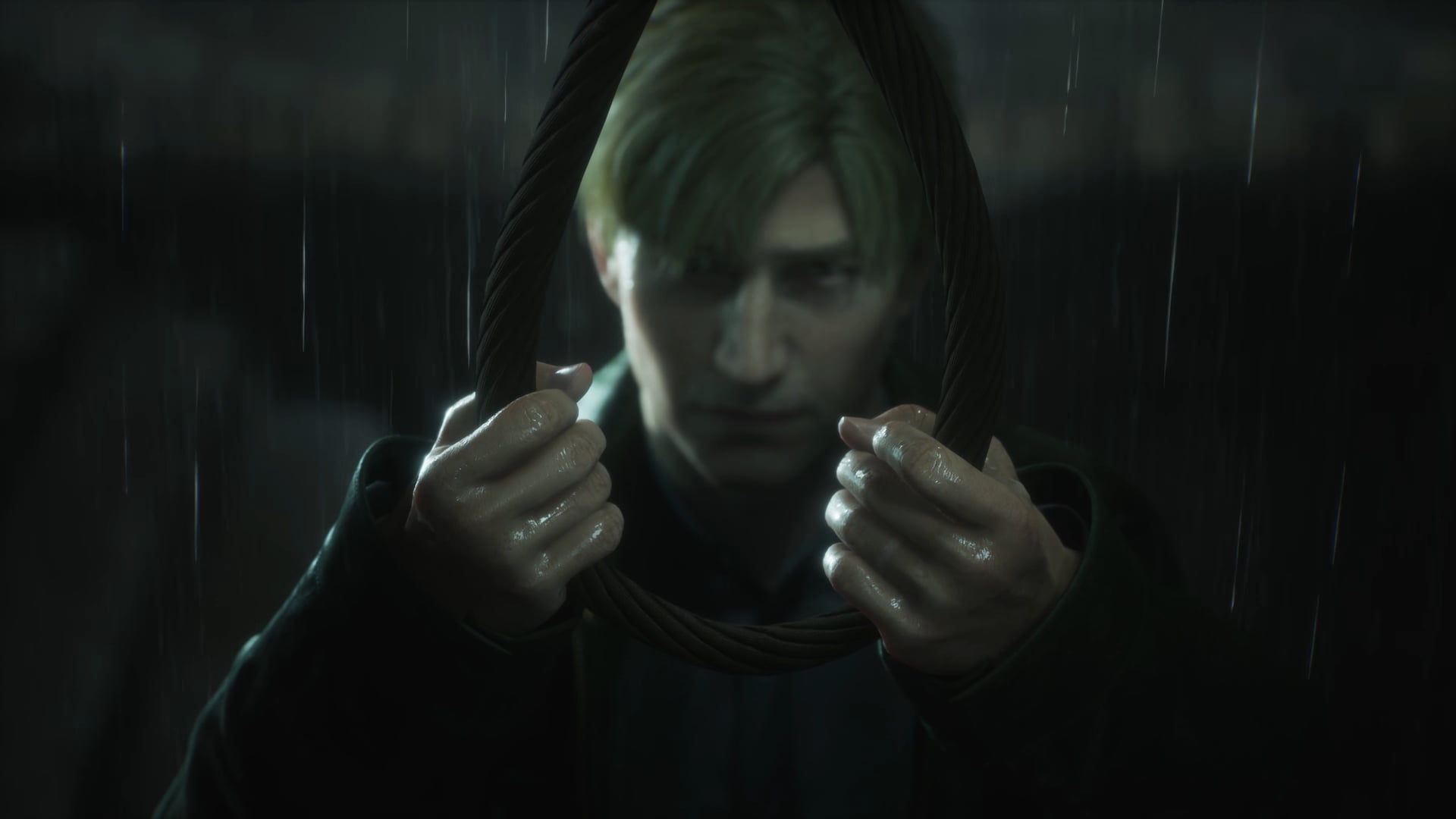Have you ever reached a point in a game where every choice feels heavy, every step echoes regret? In Silent Hill 2, the In Water ending captures James Sunderland’s tragic spiral into overwhelming guilt and grief. It isn’t just an ending—it’s a haunting culmination of James’s journey, confronting despair in its darkest form. This outcome, often regarded as the most sorrowful, embodies James’s surrender to his internal demons as he seeks solace in death alongside Mary, his deceased wife. If you want to experience the chilling depth of this finale, this guide will walk you through the key in-game actions and thematic weight while exploring the emotional nuances that define the In Water Ending in Silent Hill 2.

How to Get the In Water Ending in Silent Hill 2
Unlocking this ending requires steering James’s actions towards hopelessness and guilt throughout the game. It’s not a sudden choice made at the climax but rather a playthrough steeped in despair and introspection. Each decision chips away at James’s self-worth and mental state. To achieve this somber resolution, you must embody the essence of his grief and self-punishment through gameplay, character interactions, and decisions that guide James towards Toluca Lake’s sorrowful embrace.
1. Key Actions Leading to the In Water Ending in Silent Hill 2
Achieving this ending relies on subtly immersing James in his despair. The game tracks specific behaviors that reinforce James’s remorse and resignation—it’s not about overtly destructive choices but permeating James’s actions with a sense of hopelessness. Here’s how:
- Play recklessly: Let James frequently take damage and avoid consistently keeping him in optimal health. Even letting him fall into water hazards reinforces themes of carelessness and self-destructive behavior. However, avoid letting him die unnecessarily, as that may lead to other endings. It’s about not making extra efforts to keep him fully healed, symbolizing his apathy and emotional withdrawal.
- Avoid emotional connections: Maria and Laura represent potential paths to redemption or distraction from James’s inner turmoil. To achieve this ending, minimize concern for Maria’s well-being. Let her take damage, avoid frequent visits, and refrain from showing worry. Similarly, treat Laura as an inconvenience instead of a child in need, keeping interactions minimal and distant. Be mindful not to form strong attachments to anyone else, either, as this could divert you toward more hopeful endings than the In Water Ending in Silent Hill 2.
- Frequent item examination: Items tied to James’s guilt should be revisited regularly. Mary’s letter, a constant reminder of her death, and Angela’s knife, symbolizing themes of self-harm and despair, must become focal points throughout the game. Each examination deepens James’s connection to grief, cementing his path towards this tragic end. Additionally, avoiding or mishandling any items that represent hope (like choosing wrong coins or ignoring other potential redemptive symbols) can reinforce the sense of despair.
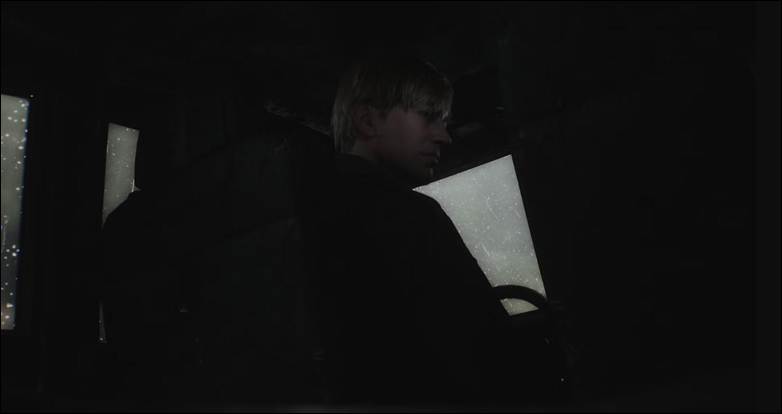
2. Character Interactions and Emotional Cues
Your interactions with characters play a significant role in shaping James’s emotional journey. Each decision signals James’s mental state—a consistent pattern of emotional detachment and neglect pushes him closer to the In Water ending.
- Maria: Reflect lack of concern in your actions. Permit her to take damage during battles, avoid protecting her, and restrain yourself from frequent visits or displays of compassion. This mirrors James’s emotional withdrawal and detachment, emphasizing his isolation. Don’t make an effort to keep Maria alive or show sympathy, as this can divert you from the In Water path. The more you neglect her, the more it reinforces his internalized guilt and grief.
- Laura: Minimize your engagement with Laura. Keep interactions brief, treating her as a fleeting presence rather than a meaningful character. This approach deprives James of a chance for innocence or redemption, reinforcing his despair. Show no real care for her well-being or attempt to guide her, as it cuts off any potential path for healing or human connection, leading to greater isolation and pushing you towards the In Water ending in Silent Hill 2.
- Angela and Eddie: Engage fully with their stories and dialogues. These characters embody guilt and trauma that mirror James’s own struggles. Amplify James’s introspection by connecting to their narratives, building a bridge to his inner torment. By understanding and empathizing with their stories, James reinforces his own emotional burden and sorrow. However, it’s important to note that over-engagement with these characters, especially in a way that offers emotional support, may lead you toward different endings. To maintain the In Water path, make sure to focus on their pain without attempting to alleviate it or connect with them in a healing way.

3. Health Management and Gameplay Decisions
James’s physical condition mirrors his mental state, making health management a key factor. To lean into the In Water ending, portray James as apathetic to his own survival.
- Keep James in low health: Use healing items sparingly, only when James is near death, and avoid full heals whenever possible. This reflects his self-neglect and self-destructive tendencies. Make sure that James’s health is often in a precarious state to embody his lack of care for his well-being and the despair that defines this ending. If you choose to heal, do so reluctantly and rarely, reinforcing his sense of hopelessness and guiding you towards the In Water ending in Silent Hill 2.
- Avoid frequent monster engagements: Combat should feel more like a struggle, emphasizing James’s vulnerability rather than highlighting moments of triumph. Let him take damage when possible, allowing enemies to overwhelm him rather than actively seeking combat. If monsters are fought, try to minimize the use of ammunition and items, creating an atmosphere where survival is tenuous and futile, echoing James’s internal battles with his guilt.
4. Examining Symbolic Locations
Silent Hill manifests James’s psyche, and its locations are steeped in grief and memory. Spending time in these spaces aligns James’s emotions with the oppressive town atmosphere, solidifying the In Water ending.
- Lakeview Hotel: A critical location tied to Mary’s suffering and death. Linger in areas evoking her memory—explore rooms associated with her hospital stay and examine objects tied to grief. This deepens James’s focus on her passing and refusal to move forward. Avoid rushing through these sections; instead, allow James to absorb the sadness and weight of his memories. The hotel, being the emotional climax of the game, should feel like a site of stagnation and emotional overload.
- Silent Hill’s streets and environments: Allow James to wander through the eerie townscape, absorbing its haunting atmosphere. The longer James exists in these desolate areas, the more their oppressive essence aligns with his own despair, a key element for the In Water ending in Silent Hill 2. Don’t hurry to reach the next location; let James be immersed in the foreboding silence and emptiness of Silent Hill. This is the mental space where James will struggle to break free from his grief and guilt, making it a perfect match for the In Water ending.
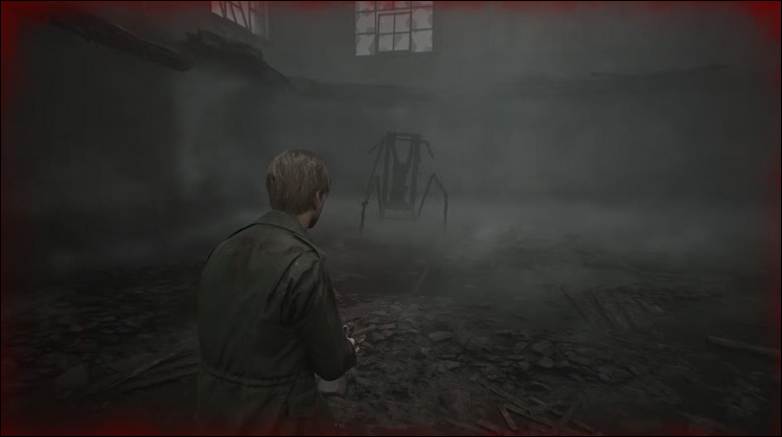
5. Handling Key Items and Clues
Certain items act as emotional triggers for James. They hold symbolic importance, shaping his pathway to the In Water ending:
- Angela’s knife: Examine this item frequently. It represents suicidal thoughts and guilt that James grapples with throughout the game. Consistently interacting with it deepens his connection to themes of despair. The knife serves as a constant reminder of his emotional torment, symbolizing self-harm and a longing to escape. Engage with it regularly to emphasize James’s deepening despair.
- Mary’s letter: Avoid revisiting this item excessively. While examining it initially is fine, repeatedly reading it undermines the ending’s focus on detachment. Keeping the letter largely ignored signals James’s attempt to suppress her memory, even as it consumes him. If you examine the letter, do so only a few times, as frequent examination can create a connection to hope that goes against the “In Water” ending’s themes of resignation.
- Photos, documents, and mementos: Beyond these, items tied to Mary’s memory—photos, documents, and mementos scattered throughout Silent Hill—should be explored thoroughly. These moments of reflection reinforce the grief permeating James’s actions, pushing him further into despair for the In Water ending in Silent Hill 2. Allow James to linger on these items, absorbing the pain they evoke and reinforcing his inability to escape the past.
6. Endgame Decisions for the In Water Ending
During the climactic sequence at Lakeview Hotel, double down on James’s guilt-ridden behaviors and emotional themes. The choices you make here solidify the path to the In Water ending.
- Focus on sorrowful objects: Revisit Mary’s letter (if you chose not to entirely ignore it), linger over photos and mementos, and allow James to absorb the oppressive atmosphere of the hotel. Don’t rush through the area; let James confront his memories without attempting to escape them. This reinforces the hopelessness surrounding him.
- Engage fully during final dialogues: Pay close attention to Mary’s monologue during the corridor before the final boss. Let it play entirely—interrupting or rushing through this moment could disrupt the ending. Every dialogue and action should emphasize hopelessness and self-loathing. Allow James to process his memories and guilt in these final moments, making sure not to disrupt this critical emotional buildup.
- Portray surrender: Avoid showing signs of redemption or hope during interactions and gameplay. Reflect James’s complete emotional resignation all the way to the end. His actions should demonstrate total surrender to despair, as this is the essence of the In Water ending in Silent Hill 2. The lack of any redemptive moment is crucial in confirming that James is accepting his fate and not seeking solace or salvation.
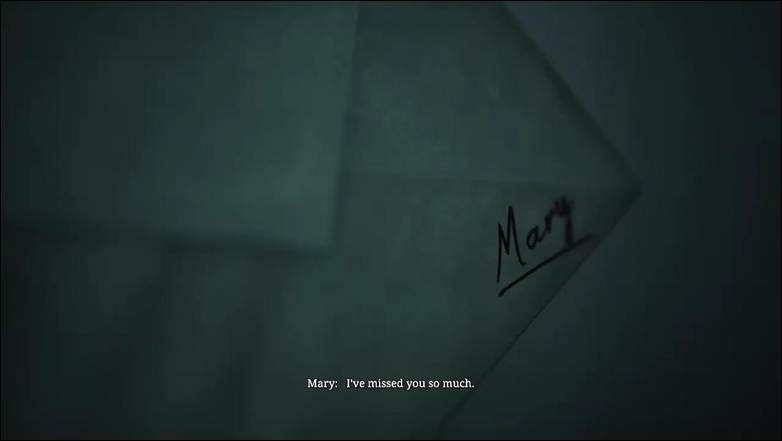
7. Thematic Significance of the In Water Ending
The In Water ending isn’t just a gameplay outcome—it’s a haunting exploration of guilt and despair.
Water here symbolizes purification through death, representing James’s attempt to cleanse himself of guilt by joining Mary in a sorrowful final reunion. Unlike other endings offering pathways to redemption or hope, In Water embraces despair entirely. Silent Hill, as a manifestation of James’s mind, cements his fate through self-punishment and grief that leave no room for escape.
This ending challenges players to confront the crushing weight of guilt and its consequences, presenting an unforgettable, devastating narrative rarely matched in gaming. The self-inflicted nature of James’s demise reinforces the idea that his internal torment and inability to forgive himself have led him to seek death as the only form of resolution.
8. Ending Cutscene: What to Expect
The cinematic for the In Water ending remains one of Silent Hill 2’s most emotionally potent moments.
It starkly depicts James driving his car into Toluca Lake, seeking eternal rest with Mary through death. Somber visuals and haunting music amplify the tragedy of the In Water ending in Silent Hill 2, leaving players grappling with the weight of James’s choices. His final act of choosing to end his life alongside Mary resonates deeply, provoking thought and lingering sorrow about his ultimate decision. This is not just the end of a game; it’s an exploration of personal guilt and emotional collapse that leaves a lasting impact on the player.
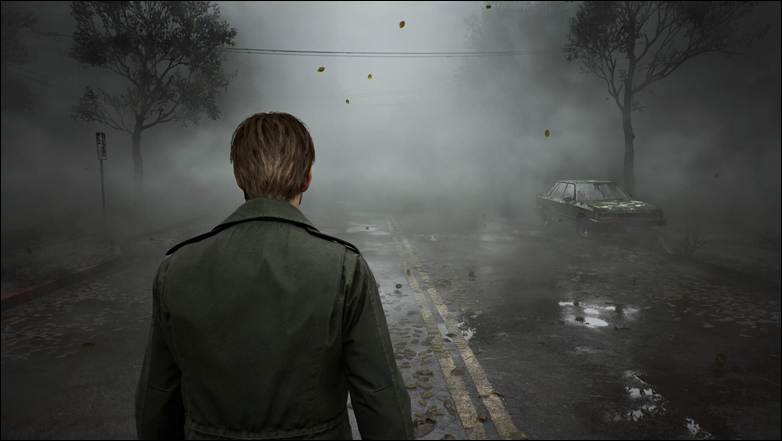
Finishing Thoughts: A Fatal Resolution
Achieving the In Water ending is a deliberate journey. To unlock it, embrace actions and behaviors that reflect James’s guilt and hopelessness. Avoid emotional connections, neglect physical health, and repeatedly interact with items symbolizing despair, like Angela’s knife. Linger in symbolic places like the Lakeview Hotel, immersing James in Silent Hill’s oppressive atmosphere. The In Water ending in Silent Hill 2 embodies the game’s darkest themes, confronting players with the weight of grief and the devastating power of guilt. Unlike other endings that offer resolution or hope, this finale demands you embrace despair, delivering an unforgettable, thought-provoking narrative that cements Silent Hill 2’s legacy as one of gaming’s most profound experiences.
Read the on-demand Gaming Guides via Gamerative.
FAQs About Silent Hill 2 In Water Ending
1. Does Eddie Dombrowski’s character interaction influence the In Water ending in Silent Hill 2?
Interestingly, despite Eddie’s presence in Silent Hill 2 and his own troubled psyche, it’s widely believed that interactions with Eddie do not directly impact which ending you receive, including the In Water ending. While Eddie embodies themes of social isolation and distorted perceptions, his storyline is more tangential to the core factors influencing James’s fate. Your focus should remain on actions directly reflecting James’s guilt, his interactions with Mary’s memory, Angela, Maria, and Laura, and gameplay choices related to health and item examination to achieve the In Water ending.
2. Is Laura’s fate explicitly shown in the In Water ending cutscene of Silent Hill 2?
No, Laura’s fate is deliberately ambiguous in the In Water ending. The cutscene focuses solely on James’s tragic act of driving into Toluca Lake. Laura is not shown, leaving her destiny open to interpretation. Some players speculate about her survival and her reaction to James’s suicide, but the game itself offers no definitive answer. This ambiguity further emphasizes the isolation of James’s despair and the finality of his choice, leaving Laura and the player to grapple with the aftermath of his actions.
3. Are there specific diaries James needs to read to increase the chances of getting the In Water ending in Silent Hill 2?
While examining diaries is mentioned as a factor influencing the In Water ending, specific diaries are not consistently identified across all guides. The emphasis is more on engaging with in-game texts that deepen James’s sense of guilt and despair. Focus on reading documents that reveal more about Mary’s illness, her suffering, and James’s feelings of regret and responsibility. The act of reading these somber narratives, rather than specific titles, contributes to the overall atmosphere of grief and self-reproach that steers towards the In Water ending.
4. Does combat style, specifically choosing to run from monsters rather than fight, influence the In Water ending in Silent Hill 2?
While the primary factors for the In Water ending revolve around emotional and item-based cues, your combat style can subtly contribute to the overall impression of James’s mental state. Consistently running from monsters, rather than engaging in combat, could be interpreted as reflecting James’s apathy and lack of will to persevere, aligning with the themes of despair and self-neglect. However, this is a less direct influence compared to health management, item examination, and character interactions. Focus on portraying James as emotionally withdrawn and self-destructive in all aspects of gameplay to maximize your chances of achieving the In Water ending.

